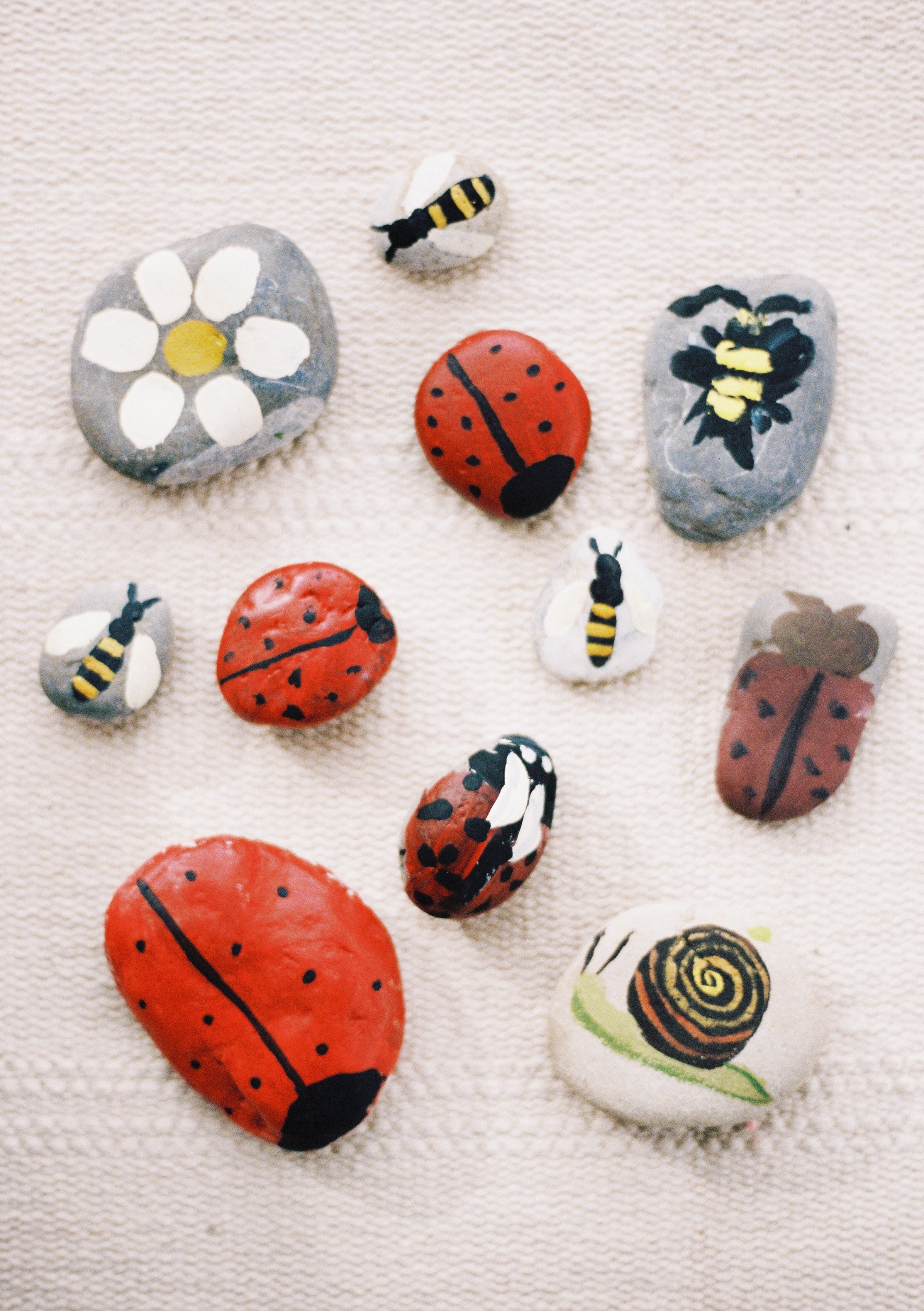
The Things We Cannot See
LESSON 2
Children use their imagination to explore how the earth prepares for spring through a story, dramatic play, and art.
The book “The Story of the Root Children” by Sibylle von Olfers.
Props like silks and capes
Flat rocks good for painting
Acrylic paint
Paintbrushes
Paint smock
Materials
Familiarize yourself with the book “The Story of the Root Children”.
Gather materials.
Prepare an area for children to paint rocks.
Preparations
Facilitate a reflective discussion on signs of spring based on previous lessons and nature walk observations.
Lead a discussion comparing the story's imaginative elements with real-world related to spring.
Prompt students to notice changes in the story's characters and setting as the seasons progress.
Provide guidance and materials for imaginative play and art as students pretend to be root children and create spring-themed painted rocks.
Objectives for Teachers
Children identify signs of spring both from the story and their own observations in nature.
Children compare and contrast imaginative elements from the story with real-world occurrences related to spring.
Children describe changes in clothing and behavior of the root children as the seasons change in the story.
Children engage in imaginative play as they pretend to be root children, dressing up and creating artwork to prepare for spring.
Objectives for Children

Collect and Connect
Practice singing the poem “Spring is Coming” with the actions you came up with.
Spring is Coming
Spring is coming, spring is coming,
Birdies build your nests,
Weave together straw and feathers,
Doing each your best.
Spring is coming, spring is coming,
Flowers are coming too,
Pansies, lilies, daffodillies,
Now are coming through.
Spring is coming, spring is coming,
All around is fair,
Shimmer, glimmer, on the meadow,
Joy is everywhere!

Activity Flow
Begin this lesson by reflecting on the previous lesson. You could ask the following questions:
What are some of the signs or clues the earth gives that spring is coming?
What were some signs of springs you remember seeing on our nature walk?
2. Next, introduce and read the story “The Story of the Root Children”. Share that this is a fun imaginative story about what is happening underground while the earth waits for spring to arrive. As the weather begins to warm, the little root children help prepare the underground world for their spring arrival. Once the earth is warm enough, they will finally emerge.
3. As you read, have the children pretend they are the root children. If you have props available such as colorful silks or fabric, have the children pretend to create clothing for spring. Then encourage them to use their imagination and pretend to emerge from underground as a flower or insect.
4. After the story, initiate a discussion with some follow up questions comparing and contrasting the fun imaginative parts of the story to the real world. You could ask the following questions:
What were the colors of the root children’s new clothes? Bring attention to the colors that start appearing in the Spring. You could discuss where they see these colors in nature (blue in the sky, red in poppy flowers, yellow in tulips and daffodils, etc.).
What insects did the root children help paint and freshen up for the Spring? You could discuss the different types of insects that start coming out in the spring such as bees, beetles, ladybugs, and butterflies.
How did the root children’s clothes change when summer ended, and autumn came? Notice the coats the root children are wearing in the picture when fall is coming and discuss why.
What did Mother Earth tell the root children and the bugs to do once the fall winds came? Just like many animals and plants hibernate during the winter, the root children will also take a long winter nap and wake once more once spring comes again.
5. After the story, continue your pretend play by having the children paint rocks to resemble bugs and flowers in preparation for Spring.



